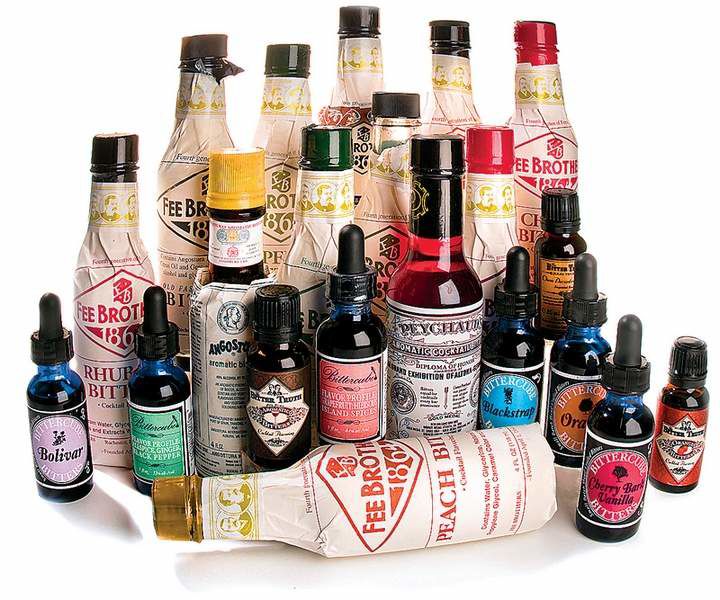Bitters of every flavor (except, oddly, bitter)
Published 5:00 am Tuesday, March 29, 2011

- Bitters are essentially the allspice of your home bar, which is why they're worth stocking.
Even the most casual of drinkers likely has a bottle of Angostura bitters stashed somewhere in the kitchen.
But celery bitters? Blackstrap? Mexican mole? Memphis barbecue?
They’re all out there, as are bitters meant to conjure specific drinks (Tiki), cultures (Creole; Thai; Moroccan), people (cocktail pioneer “Professor” Jerry Thomas) and even places (Boston). And, when used properly, the effects are anything but bitter.
“The word ‘bitter’ is an unfortunate name for the product,” says Joe Fee, fourth-generation owner of Fee Brothers, established in Rochester, N.Y., in 1863. Fee Bros. began producing its flagship Old Fashion (Aromatic) bitters in the 1950s and now sells a dozen varieties of the alcohol and herb-based flavoring agents, including Aztec chocolate, West Indian orange and plum, introduced last summer.
“Why in the world would anybody willingly put something called bitters into a drink and hope for a good outcome?” Fee asks. “Really, it all comes down to getting (the public) to recognize that there are taste receptors in the mouth: You’ve got salty, you’ve got sweet, you’ve got sour and you’ve got bitter. You really want anything that you’re eating or drinking to tickle all of those, or it’s going to taste shallow.”
Just as a pasta sauce made from scratch should incorporate a balance of salty, sweet, sour and bitter flavors, so should a cocktail, Fee says. And 99 percent of the time, if a drink’s balance is not quite right, bitters will do the trick.
As Fee says, “Bitters are the cure-all for your mixing woes.”
Bitters are essentially the allspice of your home bar, which is why they’re worth stocking. Not to mention, they’re cheap, take up little space and a few drops go a long way.
The original cure-all was the gentian root-based Angostura, developed in the 1820s by Dr. Johann Gottlieb Benjamin Sieger as a tonic to sooth seasickness. Manufactured in its Venezuelan namesake and exported to the British Royal Navy, Angostura was taken with a few shots of Plymouth Gin, which subsequently took on a pink hue. The resulting cocktail, pink gin, crept into British bars in the mid-1800s.
Alongside the rising popularity of pink gin in England was the sazerac in New Orleans, accented with a similar gentian-based tonic: Peychaud’s. But unlike Angostura, which outlived scores of other 19th century tinctures to become a 20th century best-seller, Peychaud’s until very recently was a Louisiana anomaly.
“Bitters in general, they’re hot,” says Kevin Richards, brand manager at New Orleans-based Sazerac Co., which manufactures Peychaud’s. “In terms of the growth rate, the past two to three years in particular are big.” He cites the classic cocktail renaissance as a major influence and, in tandem, 21st century bartenders’ curiosity and self-education. “As mixologists are more playful with cocktails, bitters are part of that rebirth,” he says.
Not to mention, a major Angostura shortage in late 2009 sent drink-makers scrambling for alternatives. Peychaud’s, and smaller bottlers, picked up the slack. And while Richards can’t release sales figures, he confirmed that Peychaud’s experienced a double-digit growth rate over the past 12 to 24 months.
Though the bitters industry is growing, is it relevant? Does one really need to stock grapefruit bitters in the home bar, let alone Jamaican Jerk (by The Bitter End) or Burlesque (by Bittermens)? And is it necessary for bartenders to dream up their own when the market is already saturated?
As any cocktail enthusiast will tell you, yes. There’s a variety for a reason. Bitters are the finishing touch that can make a good drink great.
Get bitter
If you’re only buying one, start with Angostura ($8 for 4 ounces), which many mixologists swear is irreplaceable. Peychaud’s ($7 for 5 ounces) is an excellent secondary. Branching out into flavors? Try orange bitters, which add excellent dimension to dark spirits.
Less is more
Similar to vanilla extract or any other highly concentrated flavoring agent, a little goes a long way. Two to three drops will do it.
If it ain’t broke
Bitters are a great addition, but not necessary in all occasions. No need to reinvent the gin and tonic, for example.






